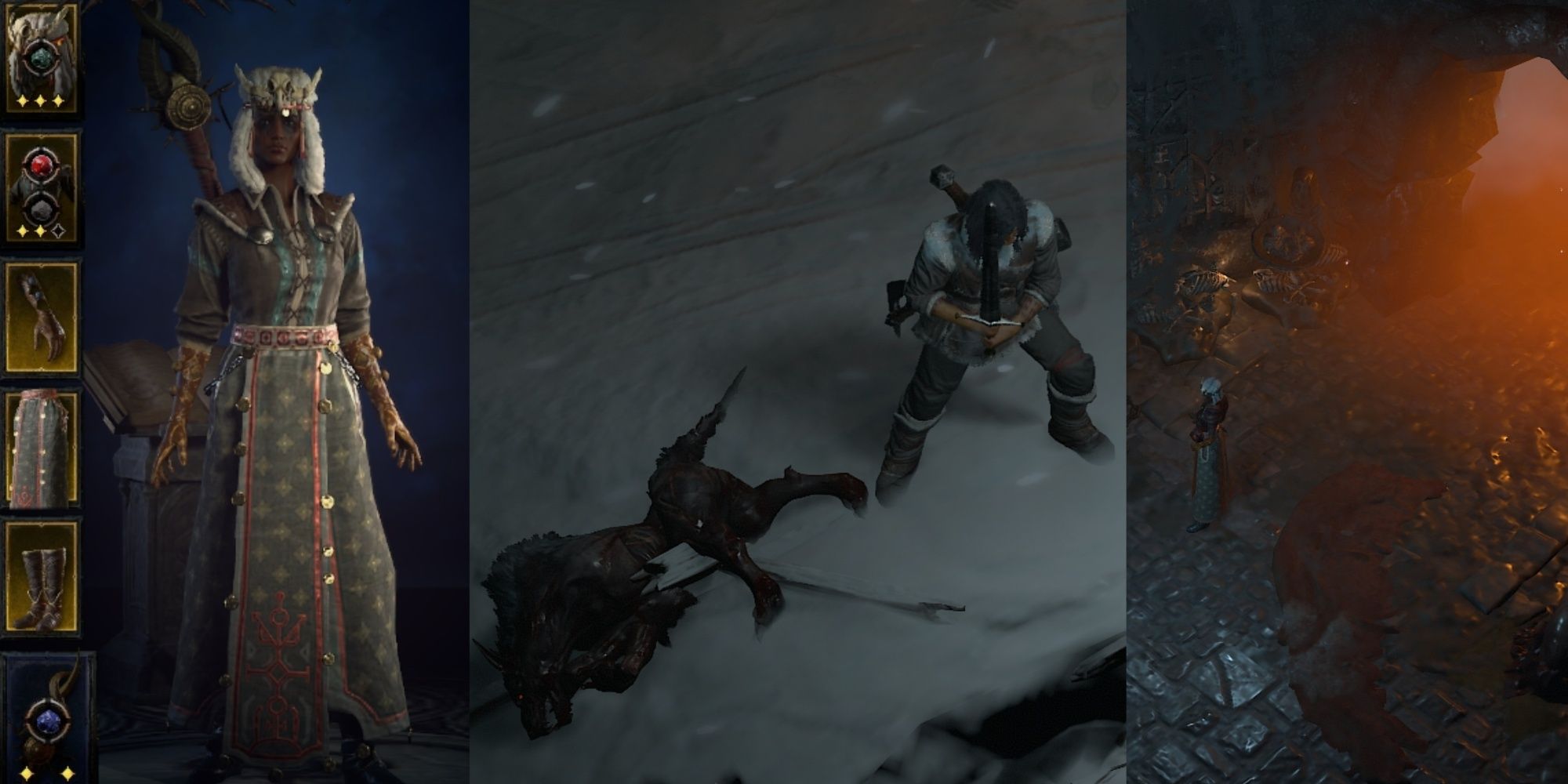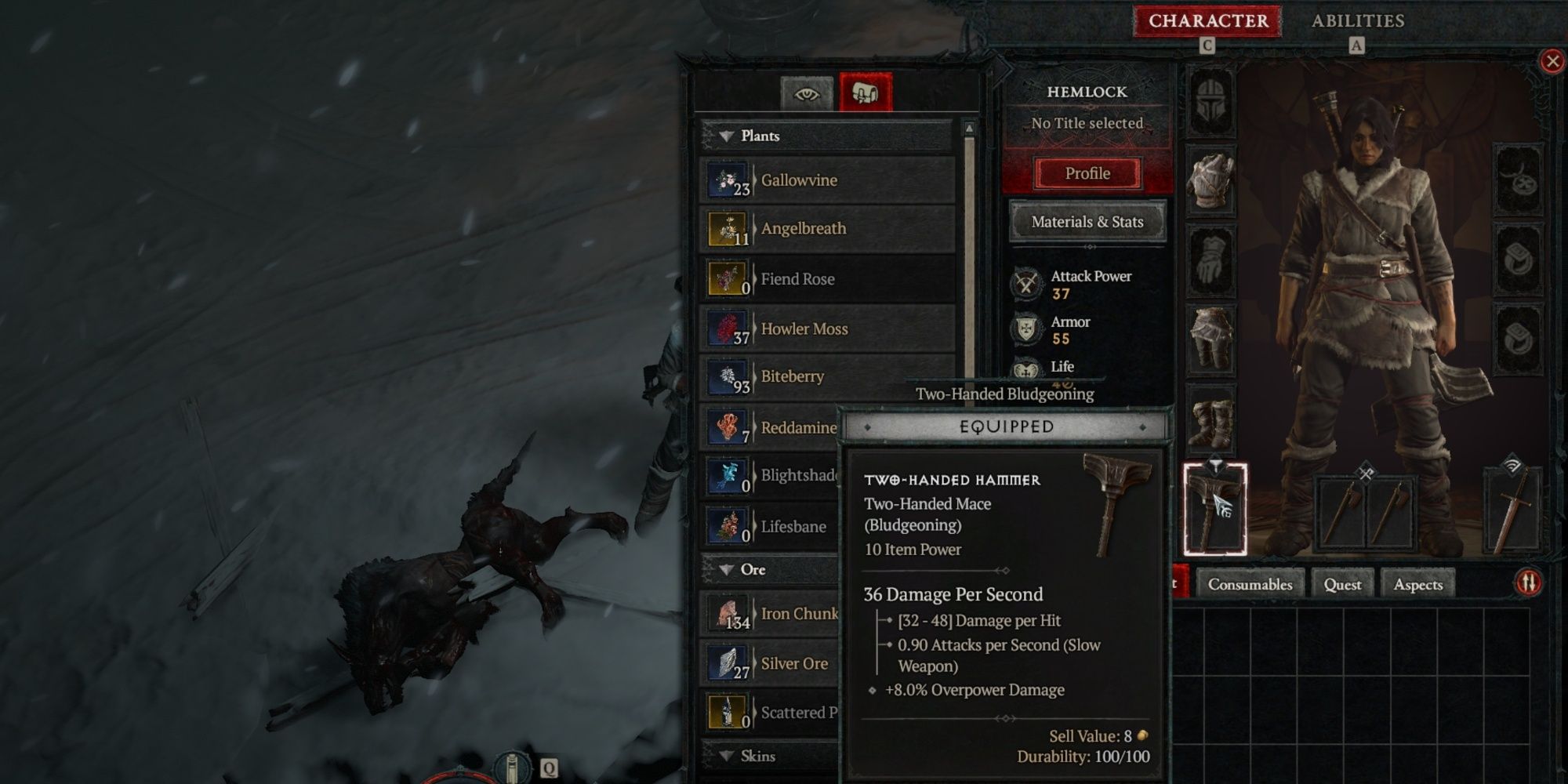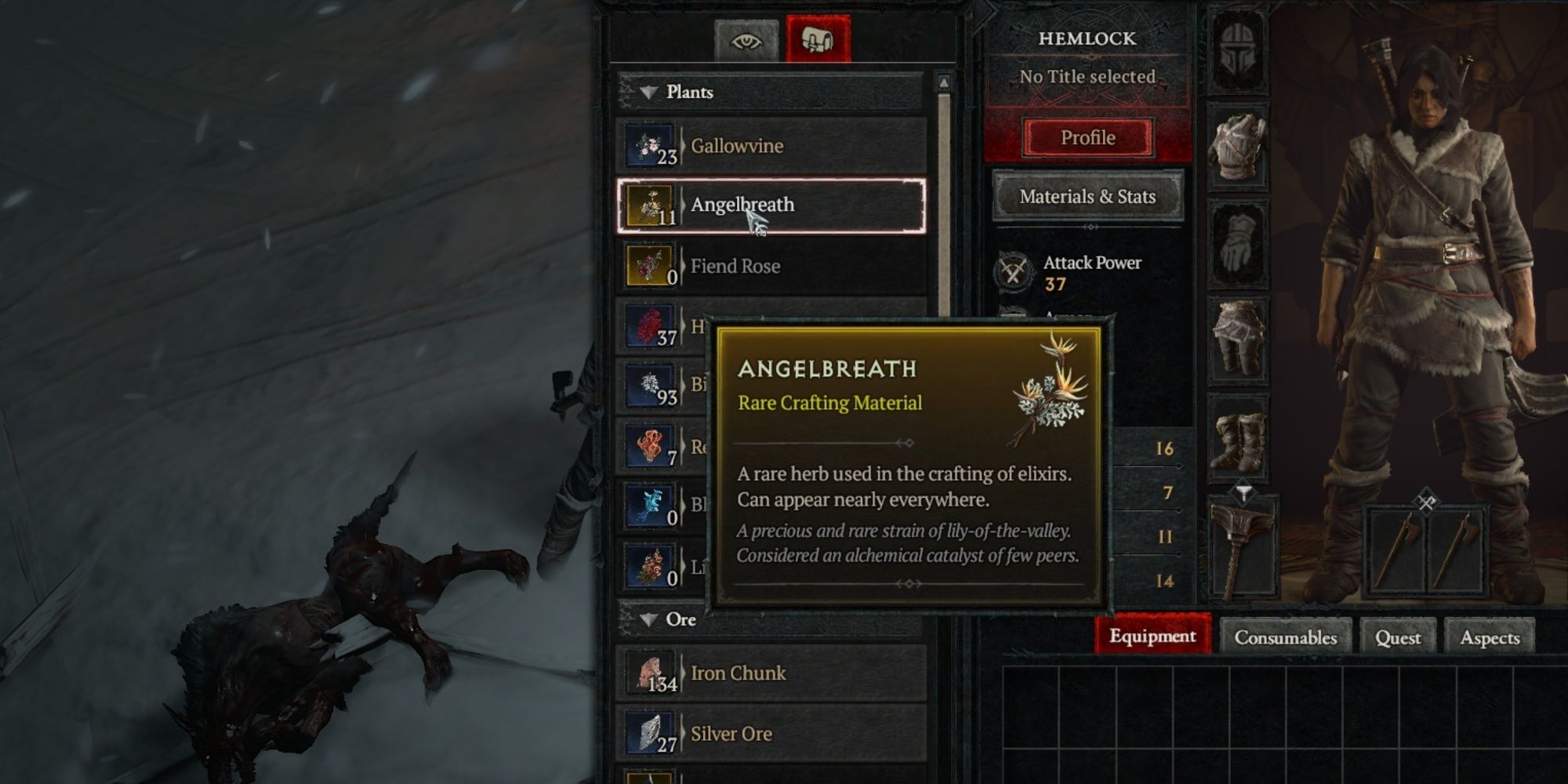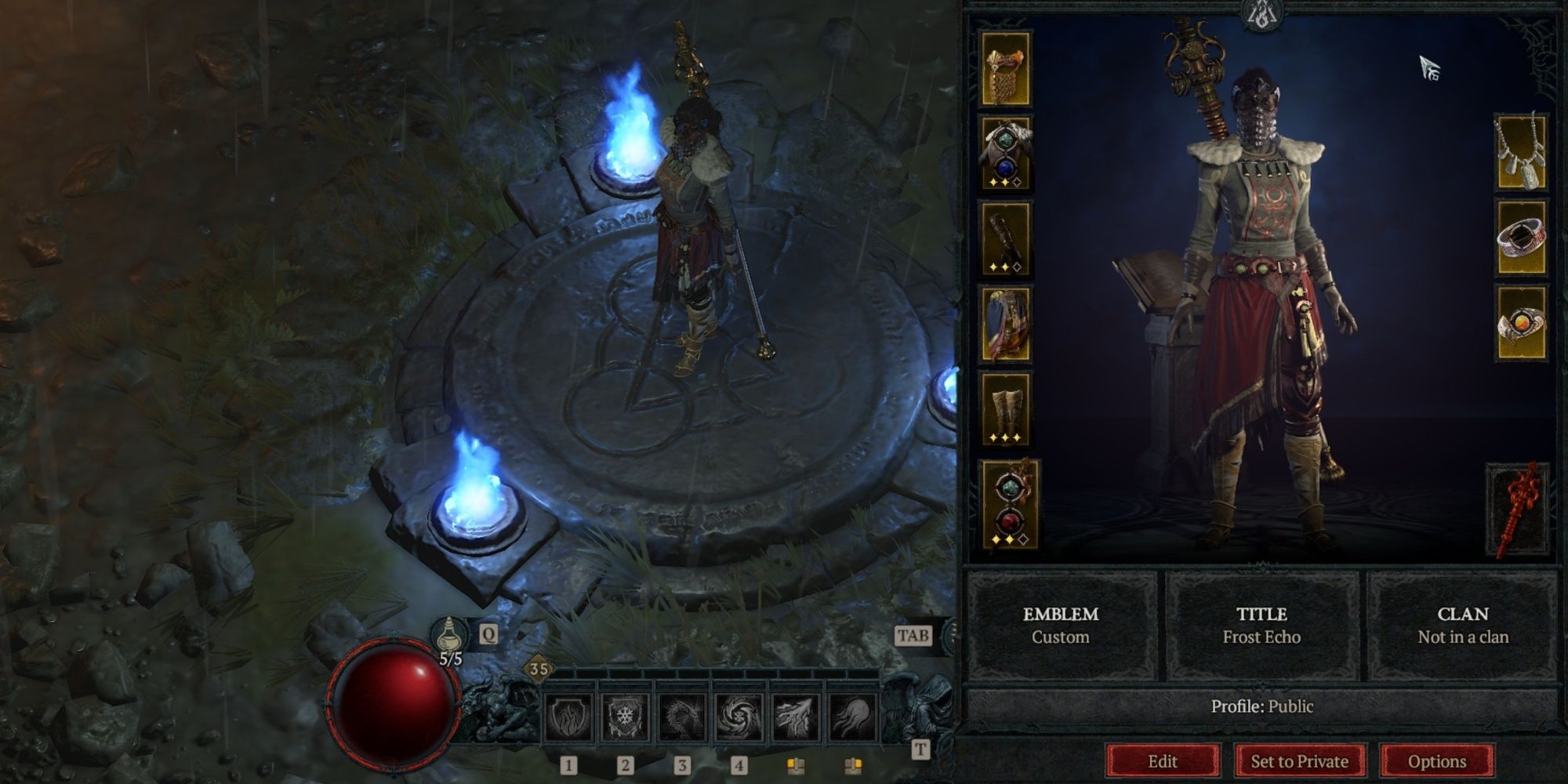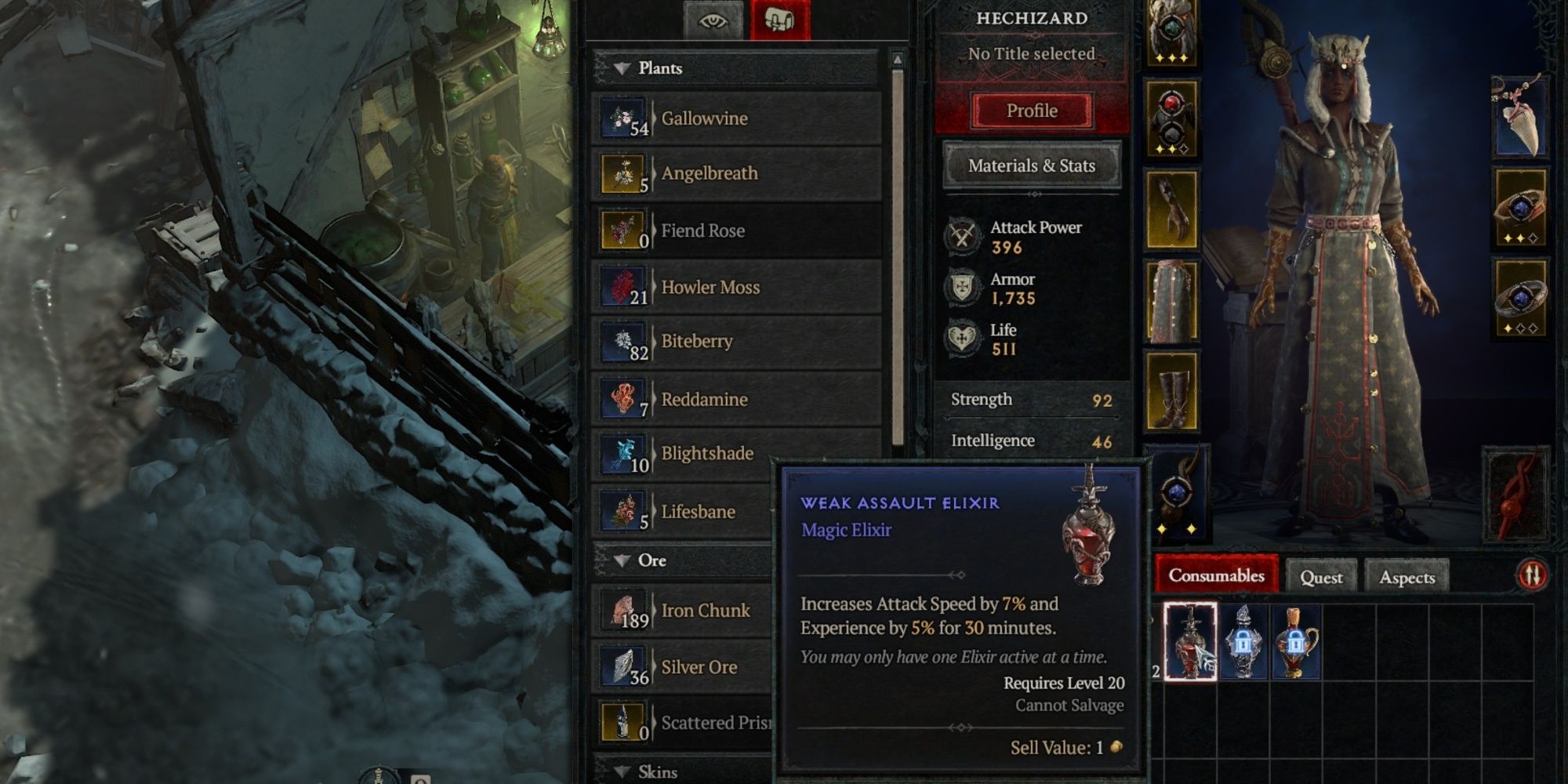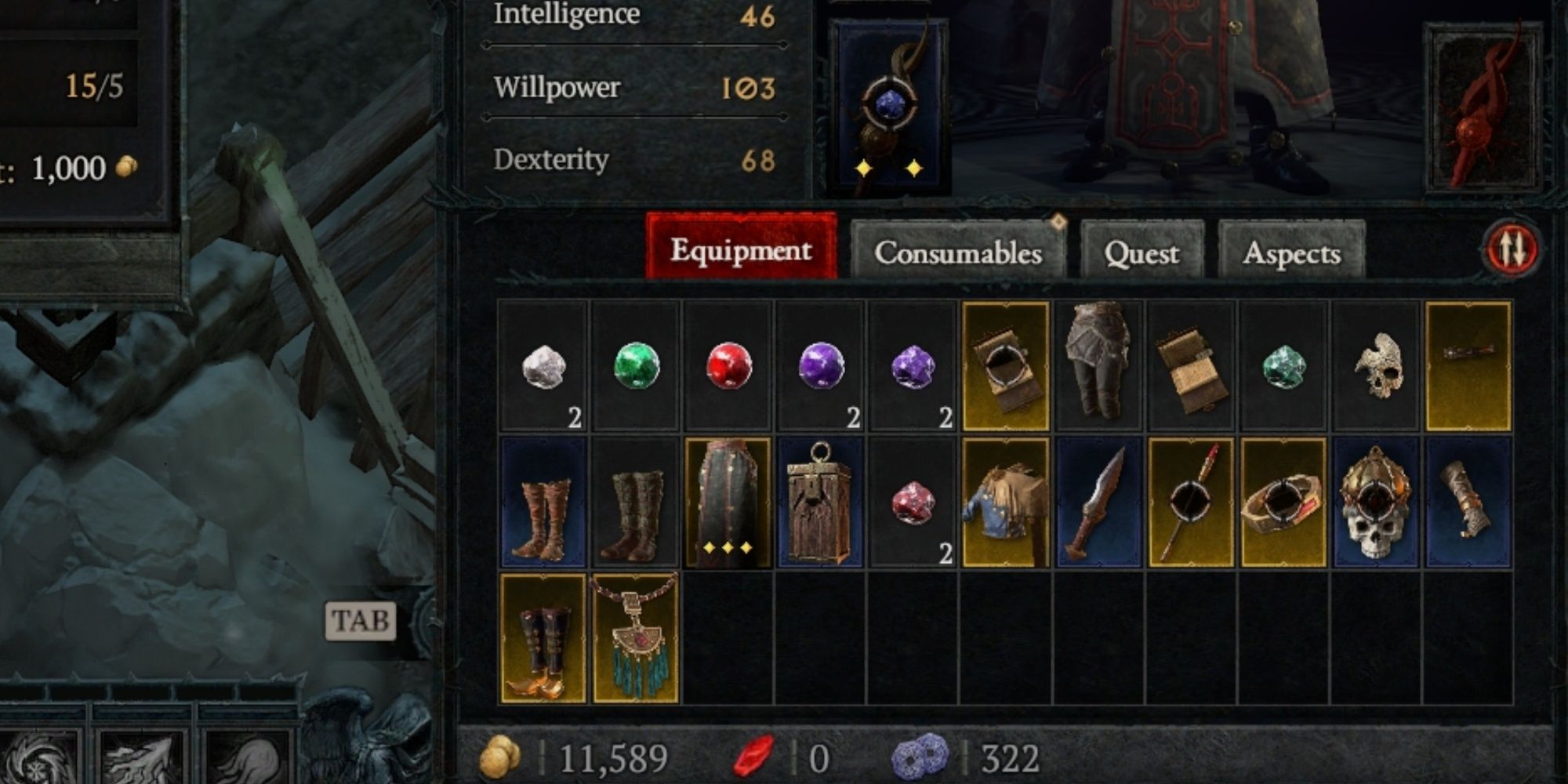Diablo 4 has launched, and after a long string of triple-A disappointments, gamers can finally enjoy a decent horror ARPG. Most players are so anxious to get out into Sanctuary that they forget about less exciting but just as important details. An example is all of the handy information, abilities, and character customization options that are accessed through the Character Interface.
The most recent incarnation of Sanctuary, and all of the usual enemies and victims contained therein, includes the usual inventory of weapons, wands, various bits of gear, gold, and treasures, but there are also important options like titles and stats to consider. All of this information can be easily found via the Character Interface as long as a player knows where to look.
The Character Interface
When the player opens up the Character Interface, they'll see it's organized into two main sections; Character and Abilities. The Abilities can also be accessed directly using a hotkey, which flashes on the right of where the combat skills are stored on the action bar.
It's essential to know how to find some of these options, not only for general gameplay but also to customize character details, organize gear, and consumables, and adjust basic preferences such as titles and public profiles.
The UI will tell the user what button they need to use on their controller or keyboard to access the Character and Abilities screens. This can be customized in the Options tab in the game settings.
The Character Screen
The basic Character screen is the first thing a player sees when they access their Inventory using the shortcut designated by their input of choice. This is where most of the player's gear, equipment, raw materials, awards, titles, and even account information are stored.
More detailed information connected to the player's gaming profile or Blizzard account can be found under the game Menu screen.
Profile
- Edit. Change a character's title and emblem. Both a prefix and suffix are available as titles for a name, and the emblem is the symbol that decorates the character nameplate.
- Private/Public. Allow other players to see a character's profile by keeping it public, which is the default setting. Changing it to private hides certain details.
- Options. This refers to the player's online status. Change this to Away, Available, Busy, or Appear Offline.
Materials & Stats
- Materials. Instead of cluttering up the Inventory space or requiring the use of a different bag, this is where all of the raw materials picked up in the wild are stored. That includes plants, pelts, ores, and gemstones.
The following categories are filed under the second tab, Stats.
- Currency. Not only gold, but other types of currency used in the game such as Red Dust and Obols.
- Core Stats. The basic character abilities, such as Dexterity and Strength, and the character's level.
- Offensive. Find the numbers for Critical Strike Chance, Weapon Damage, and other offensive abilities here.
- Defensive. Stats about life levels, AC rating, and Dodge Chance, among other defensive skills., are available here.
- Utility. The main source of power for the character. A Barbarian would have Fury, for example, and a spellcaster would have Mana.
- PvP. Scroll all the way down to find Damage Reduction and Armor Contribution.
Inventory
- Equipment. The most obvious and first thing a player looks for when they open this tab is where the extra gear is stored. This is for weapons, jewelry, and armor.
- Consumables. As the name implies, anything that is used and then consumed. This means potions and elixirs but also items like keys.
- Quest Items. These are any objects that are picked up or given to the player for a quest. It includes items that need to be delivered used, filled, or collected as part of a quota.
- Aspects. A player acquires a Codex of Power Aspect after completing a dungeon. These can be affixed to a rare or legendary item, which includes both gear and weapons, to augment their existing effects or give them a new one.
Diablo 4 is available now for PC, PlayStation 4, PlayStation 5, Xbox One, and Xbox Series X/S.

